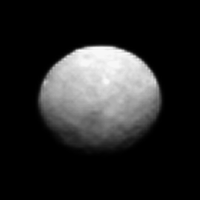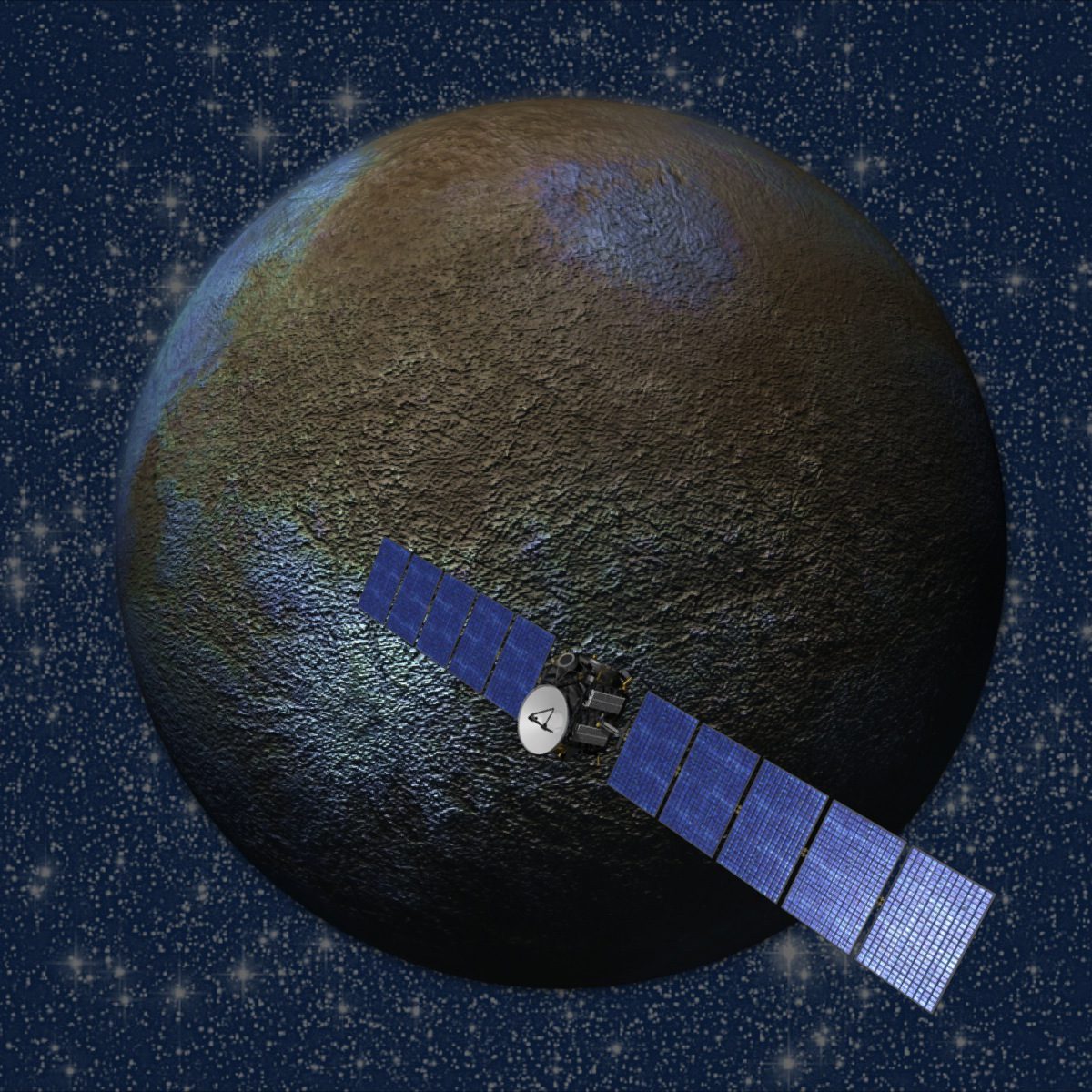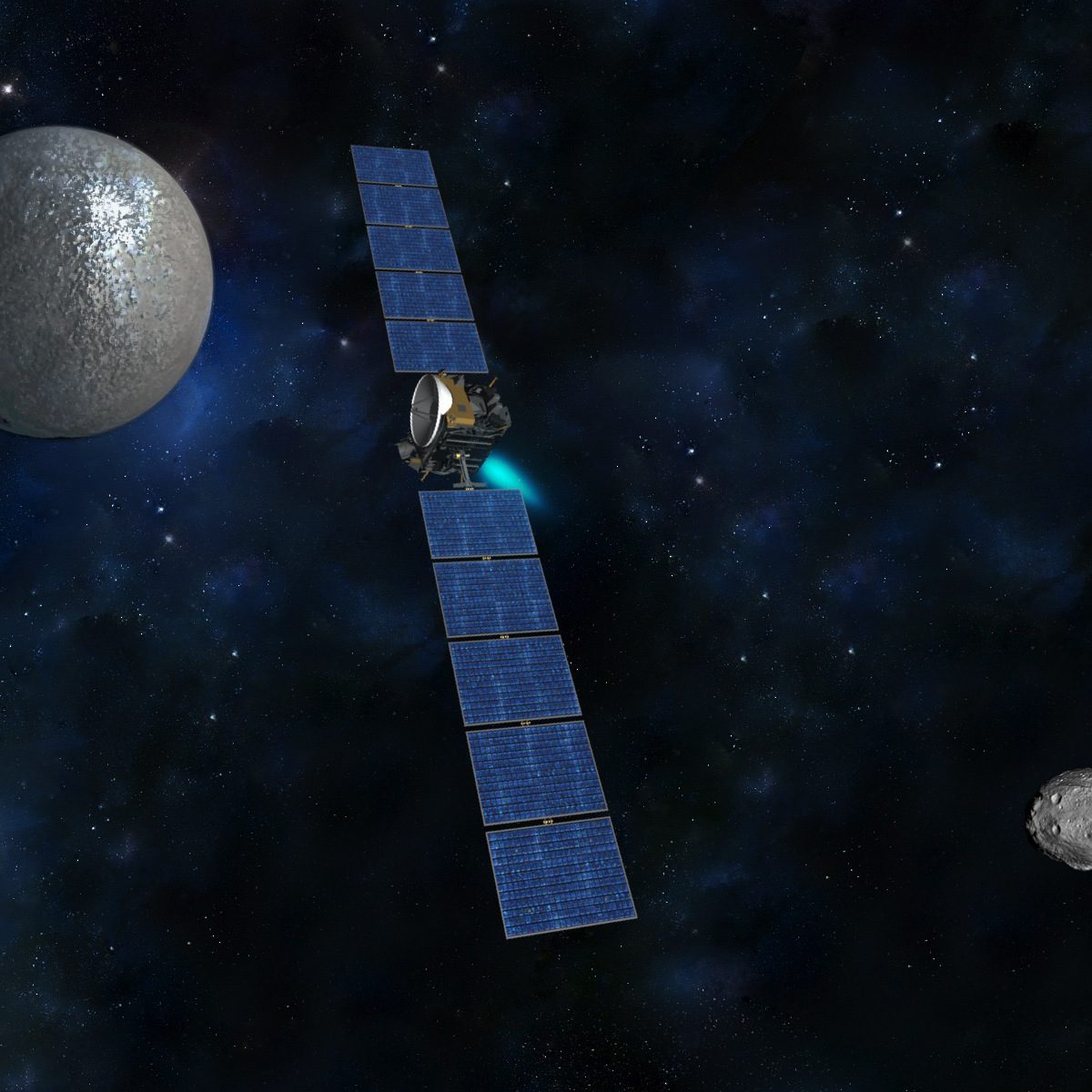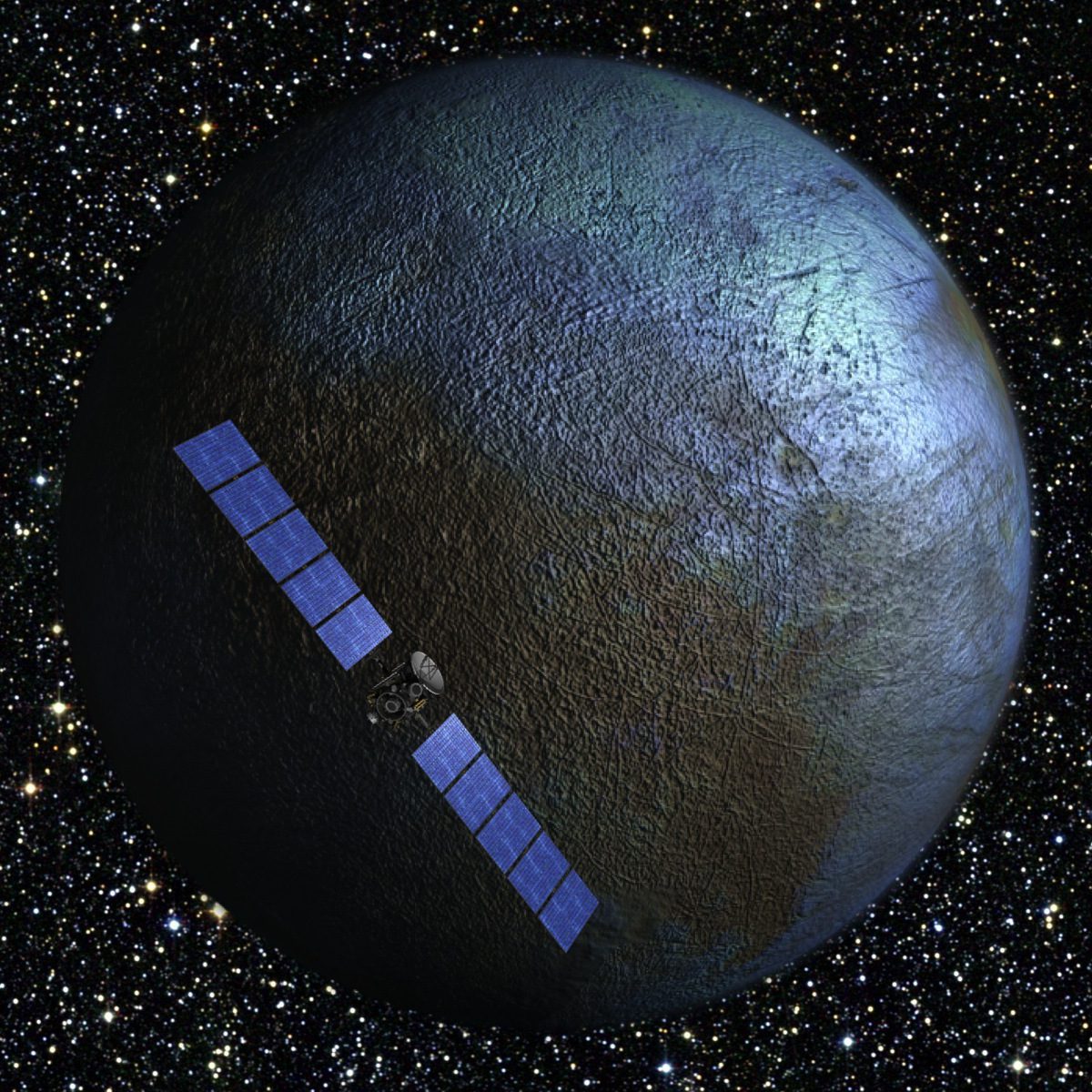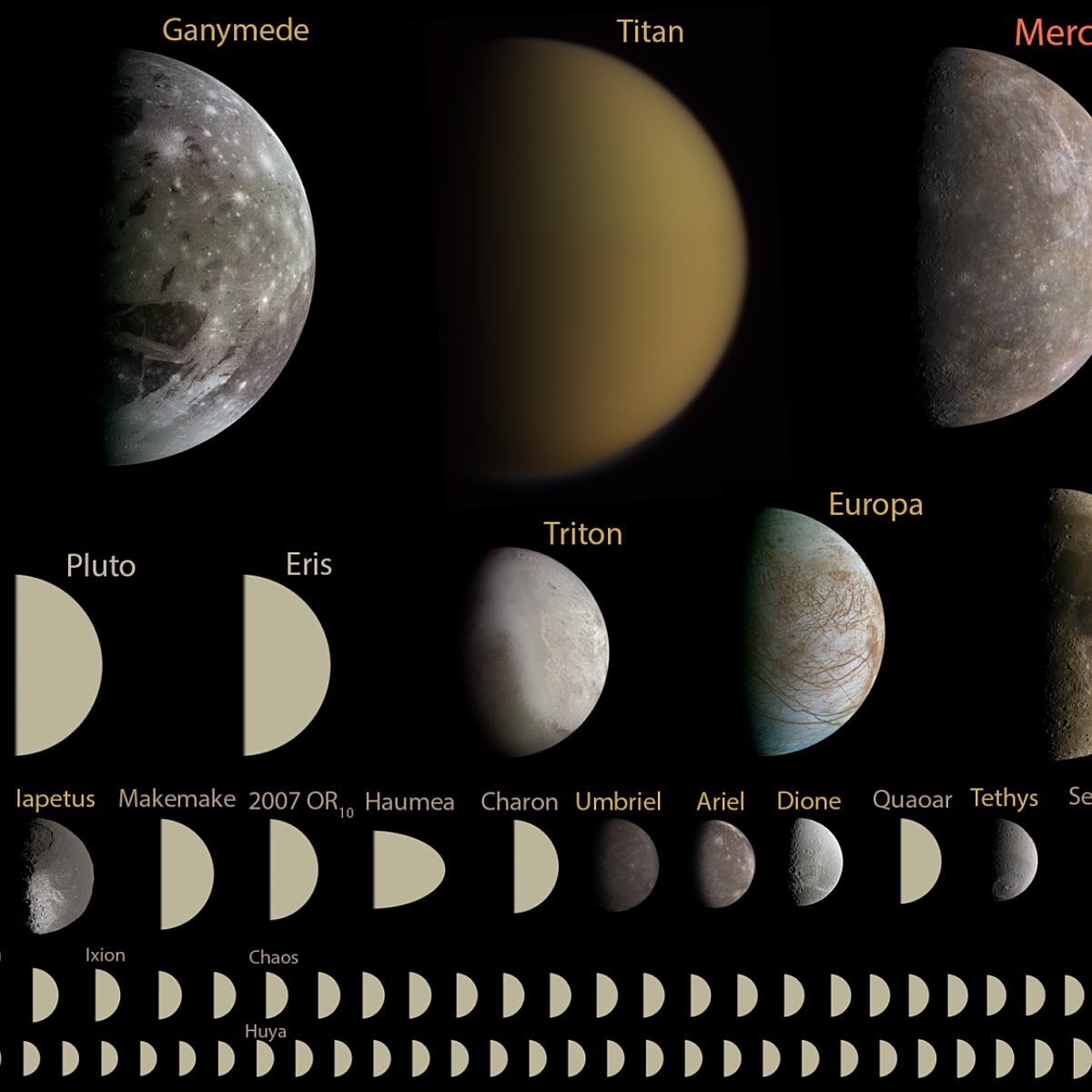All
All
Stories, updates, insights, and original analysis from The Planetary Society.
Ceres coming into focus
The Dawn mission released new images of Ceres yesterday, taken on February 4, when Dawn had approached to within 145,000 kilometers. More details are coming into view, and they're fascinating. For one thing, there's not just one white spot any more: there are several.
Ceres Coming Into View
Dawn is on approach to Ceres, the largest of the asteroids, and is starting to resolve features.
Dawn Journal: Closing in on Ceres
Dawn's chief engineer Marc Rayman gives an update on the mission as it gets ever closer to its next target: The dwarf planet Ceres.
Ceres: Just a little bit closer (and officially better than Hubble)
Last week's Dawn images of Ceres were just slightly less detailed than Hubble's best. This week's are just slightly better.
New Dawn images of Ceres: comparable to Hubble
Dawn has captured a series of photos of a rotating Ceres whose resolution is very close to Hubble's, and they show tantalizing surface details.
Year of the 'Dwarves': Ceres and Pluto Get Their Due
This year we achieve the first exploration of these curious but fascinating objects. Paul Schenk explains what we may learn about them.
Dawn Journal: History of Ceres
As Dawn looks toward the new world of Ceres, Mission Director Marc Rayman looks back on Ceres' discovery.
Ceres is round!
Okay, so the fact that Ceres is round is not news. It's still thrilling to see Ceres begin to come into focus as a round world.
Dawn Journal: Ion thrusting (or not)
Marc Rayman gives the latest update on the Dawn mission, focusing this time on the performance of its ion propulsion system.
Dawn Journal: From HAMO to LAMO and Beyond
Marc Rayman updates us on the Dawn mission, its plans from high to low altitude mapping orbits at Ceres, and what the intrepid spacecraft will pursue next.
Dawn Journal: Survey Orbit at Ceres
This month Dawn's mission director Marc Rayman continues the preview of how Dawn will explore Ceres, this time in its survey orbit.
Pretty Picture: Three Wanderers
With all the excitement happening on missions criscrossing the solar system, I often forget to enjoy the views of our solar system that we can achieve from home. Amateur astronomers don't make the same mistake. Here's a lovely photo that Stuart Atkinson sent me, captured last night from Kendal, England, showing four special wanderers.
2015 will be the Year of the Dwarf Planet, and you need to tell people about it!
I am very excited about 2015, more so than I have been about any year since I started working at The Planetary Society. Dawn will enter orbit at Ceres, and New Horizons, which will fly past Pluto and Charon. But if we want this kind of exploration to continue, I'm challenging you, dear readers, to tell the world why such non-planetary worlds are compelling places to go exploring.
Dawn Journal: Distant interplanetary adventurer
Traveling confidently and alone, Dawn continues to make its way through the silent depths of the main asteroid belt. The interplanetary adventurer is on its long journey to the uncharted dwarf planet Ceres, by far the largest of all asteroids.
Dawn Journal: Craving Power
Ion propulsion is not a source of power for Dawn. Rather, the craft needs a great deal of power to operate its ion propulsion system and all other systems. It needs so much that...we crave power!!
Terra Cognita
Pushing back the frontier, and filling in the blank spaces on the map.
Dawn Journal: Breaking Velocity Records
The indefatigable Dawn spacecraft is continuing its extraordinary interplanetary flight on behalf of inquisitive creatures on distant Earth. Progressing ever farther from Vesta, the rocky and rugged world it so recently explored, the ship is making good progress toward its second port of call, dwarf planet Ceres.
Planetary Radio: Don't Step in That Puddle!
The Planetary Science Institute's Amanda Hendrix is the guest for our July 1 episode. She finds water in the least likely places, including Luna.
Dawn Journal: Thrusting to a new personal best
Traveling from one alien world to another, Dawn is reliably powering its way through the main asteroid belt with its ion propulsion system. Vesta falls farther and farther behind as the spacecraft gently and patiently reshapes its orbit around the sun, aiming for a 2015 rendezvous with dwarf planet Ceres.
Dawn Journal: A low-orbit shortcut to Ceres
Marc Rayman's latest Dawn Journal explains why Dawn is currently closer to the Sun than both Ceres and Vesta.


 Explore Worlds
Explore Worlds Find Life
Find Life Defend Earth
Defend Earth


 Sun
Sun Mercury
Mercury Venus
Venus Earth
Earth Mars
Mars Jupiter
Jupiter Saturn
Saturn Uranus
Uranus Neptune
Neptune Small Bodies
Small Bodies

